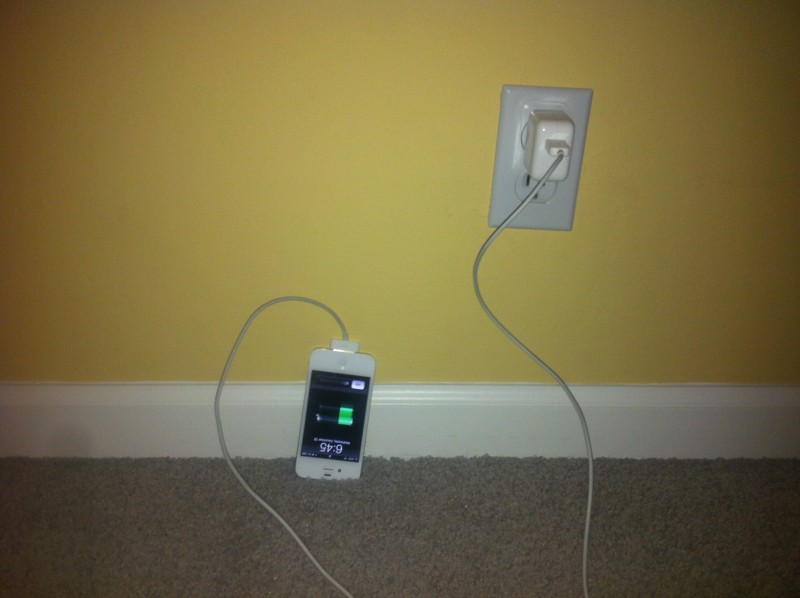Daire Collins | Deputy Features Editor
Smartphones are the future, as well as the present. For the majority, the smartphone has become an integral asset. It makes perfect sense, a computer in your pocket with all the benefits of a phone. Being connectable everywhere is now, as they say, key.
Instagramming your lunch, tweeting on the bus, checking in at the Pav; all regular events. Yet this instant information at our fingertips comes at a price. While the common denouncement is that it stifles direct contact, converting us all into smartphone dependent drones, this article isn’t about that. The real price we pay is mobility. While the software technology for smartphones has leaped forward in the past five years, the less glamorous development of longer lasting batteries has lagged way behind.This has resulted in creating incredibly fast and complex software which drains the battery in less than >…<
Long gone are the days of the Nokia 3310 (13 years have past in fact) and with it have the reality of having a phone last a battery cycle for three full days. Currently, the iPhone 5 can last up to 660 minutes browsing on WiFi. That’s eleven hours at probably the bare minimum anyone would use with their phone, not accounting for making calls, taking pictures or using 3G data(and definitely not accounting for 4G). This lifespan is further reduced when the iPhone 5 is running on the new operating system of iOs 7; it loses 200 minutes of battery time.
While people may argue that the iPhone is notoriously poor for battery life, the competitors do not significantly increase this figure. This brings us to the crux of this article: the phenomenon of what I shall coin as “Socket Trawling”, in reference to the deep sea fishing technique. Anyone who has a smartphone that is anymore than a year old should instantly know what it refers to. Noticeable in most public spaces, “socket trawling” or “cruising for sockets” refers to all those around you with their smartphone plugged in and charging. For those amongst us without the funds to update to the latest modules it’s the search to continue our daily fix. The transition from being king/queen of Snapchat to holding completely a lifeless phone is a harsh slap from reality. No longer are you constantly included in six way Whatsapp conversations nor in on the joke of the moment. By the time you get home to charge your phone, the invitation for that coffee may have long past.
Long gone are the days of the Nokia 3310 (13 years have past in fact) and with it have the reality of having a phone last a battery cycle for three full days
I am deeply sympathetic to my cohorts, trapped between a lack of funds to update and a need to stay in contact. I got so frustrated with my “socket trawling” antics, that I bought a new battery on amazon. While my situation has somewhat improved, now my phone is occasionally usable in the great outdoors, it did not reach my somewhat lofty expectations. In those dark days of frustration and loneliness I did a little digging as to why smartphone batteries are so… shit. It turns out that the first nano battery, the lithium ion battery in use in most phones made in the last 7 years has reached its limitations. In fact, its current form was discovered much longer ago; as the software has gotten faster and improved dramatically, the battery hasn’t changed. So while our batteries are much longer lasting in the iPhone 5 than in the Nokia 3310 (it ran on a nickel based one), the iPhone 5 is running on a very similar battery to the original Iphone.
All is not lost, however. While it did take some time for companies to realise that the software was beginning to far outstrip the practical limits of the battery, they have begun to reverse that trend with the invention and development of smaller nano batteries. Our own Department of Physics and the CRANN institute at Trinity has received acclamation for its part in the development of longer life batteries. While this may take some time, the growing frustration at the integrated battery, which can’t be easily removed, has resulted in the massive online attention and praise given to the Dave Hakken’s Phonebloks. While it remains still an idea, it would allow owners to individually update its components, making for a more durable phone. Perhaps in the future, remaining connected won’t mean remaining next to the socket.







